
 th Anniversary
th Anniversary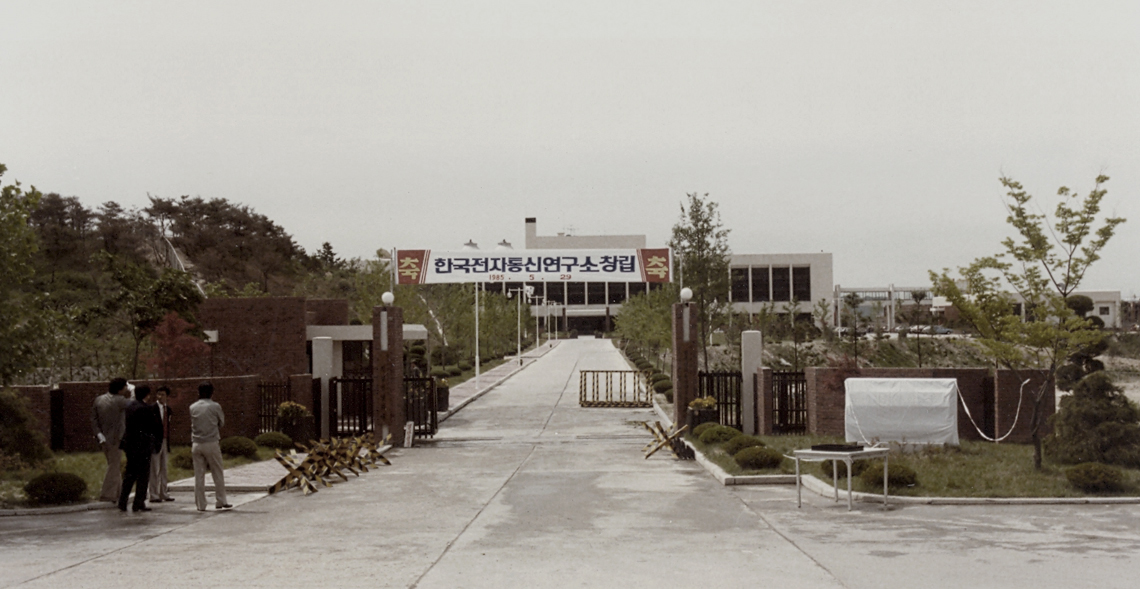
On May 29, 1985, KIET, which had led semiconductor and computer research, was merged into KETRI,
opening the era of the Electronics and Telecommunications Research Institute (ETRI).
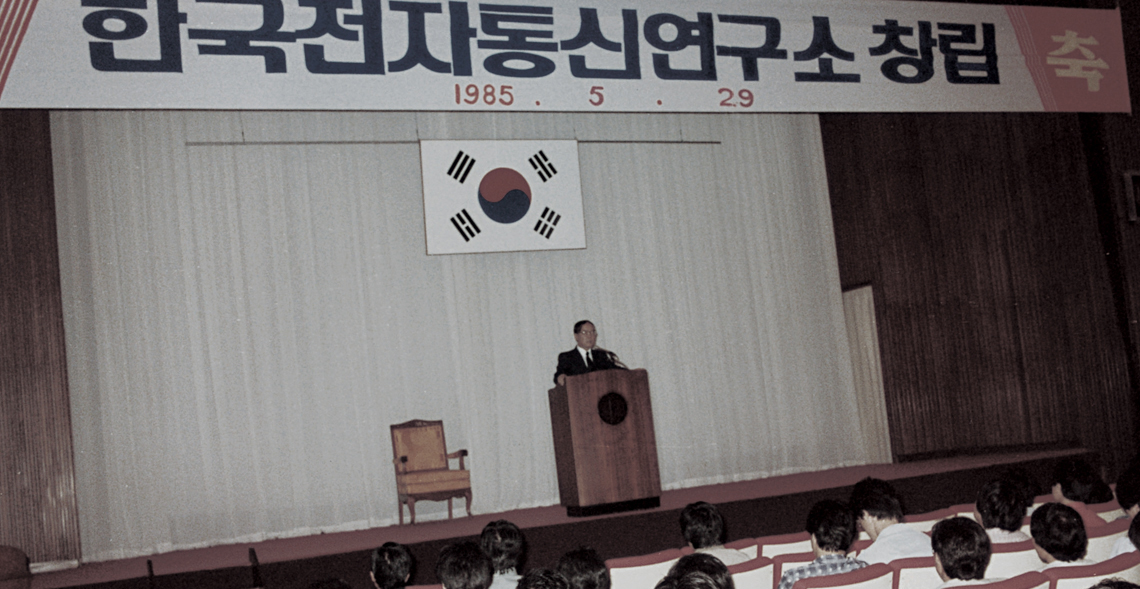
On May 29, 1985, ETRI President Sang-hyeon Gyeong, at a foundation ceremony,
proclaimed the era of ETRI as an organization specializing in electronics and telecommunications research.

On April 18, 1985, the international ISDN workshop was held at the International Telecommunications Center.

(Left)Signboard-hanging ceremony on March 25, 1986, for ETRI-affiliated Institute of Space Science and Astronomy.
(Right) In 1986, ETRI became the world’s tenth organization to develop domestic TDX technology, which had been possessed only by some advanced nations.
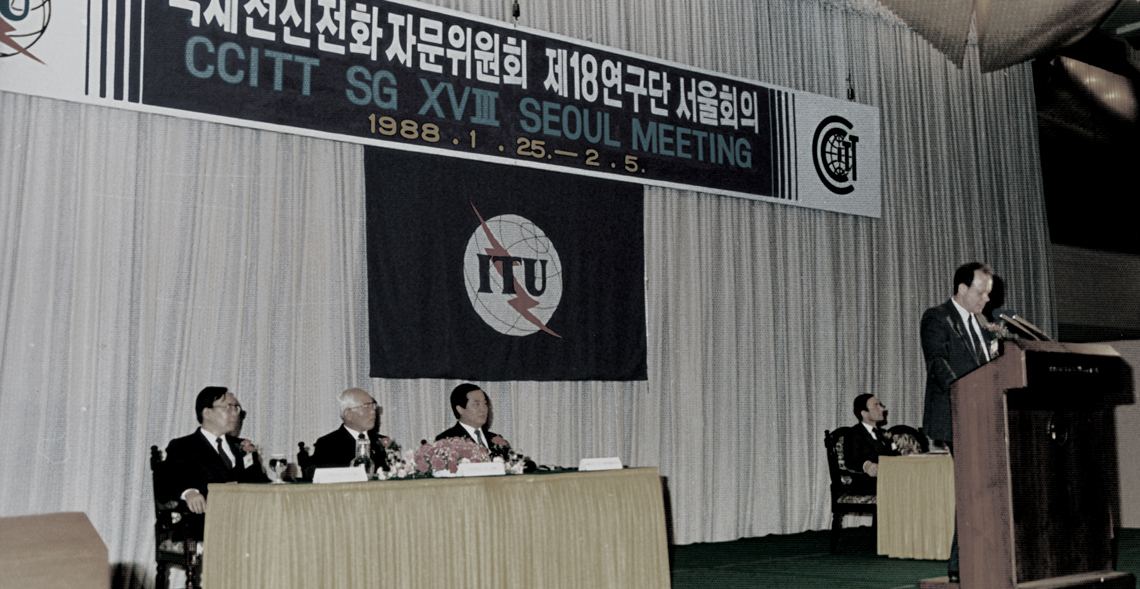
In January 1988, ETRI enhanced its global presence by holding CCITT (presently ITU-T) SG18 in Seoul.

In October 1988, led by its personnel development division, ETRI launched efforts to cultivate researchers’ capacity.
As part of such efforts, ETRI categorized personnel ranks into principal, senior, and general levels and offered job training accordingly.

In April 1989, the telephone exchanger (TDX-1B) began service in four areas:
Gyeongsan and Chilgok in Gyeongsangbuk-do; Jumunjin in Gangwon-do; and Anjung in Gyeonggi-do.
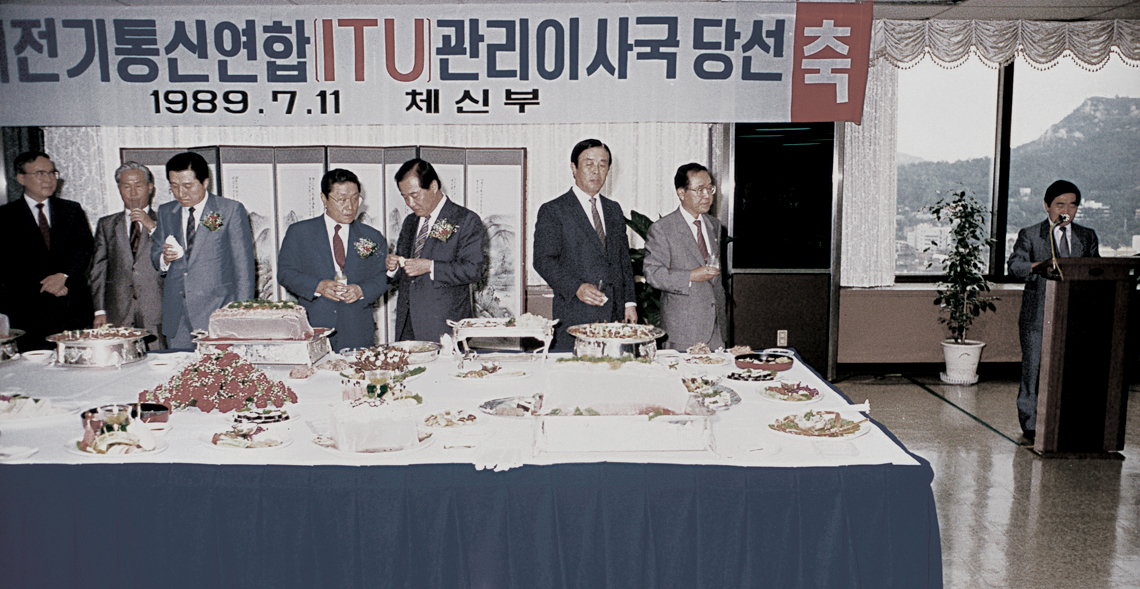
On July 11, 1989, Korea was elected as an ITU director country in reflection of its enhanced status in the electronics and telecommunications industry.
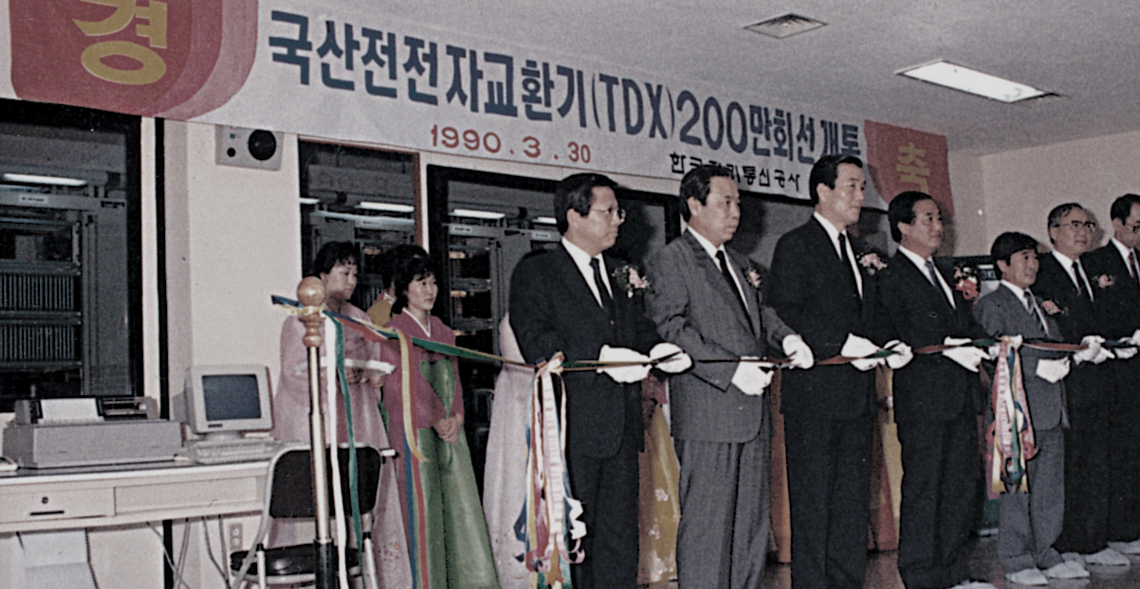
In March 1990, TDX subscription exceeded two million lines, leading the digitization of telecommunications network.

In February 1989, ETRI successfully completed the joint development of 4M DRAM,
allowing Korea to possess ultra-high density semiconductor manufacturing technology.

In March 1991, ETRI became the nation’s top semiconductor research institute by developing 16M DRAM
almost simultaneously with developed countries.

On May 24, 1991, ETRI held a briefing to report on the progress of the joint development of 16M DRAM.

To create a top research-friendly environment, ETRI completed the construction of its sixth research building in 1991,
following the second (1985), third (1987), and fifth (1989) buildings.

(Left) In 1991, Apex was founded as ETRI’s first start-up company.
(Right) In 1991, ETRI solidified Korea’s information and telecommunications industry by successfully developing the administrative network host II (TiCOM).
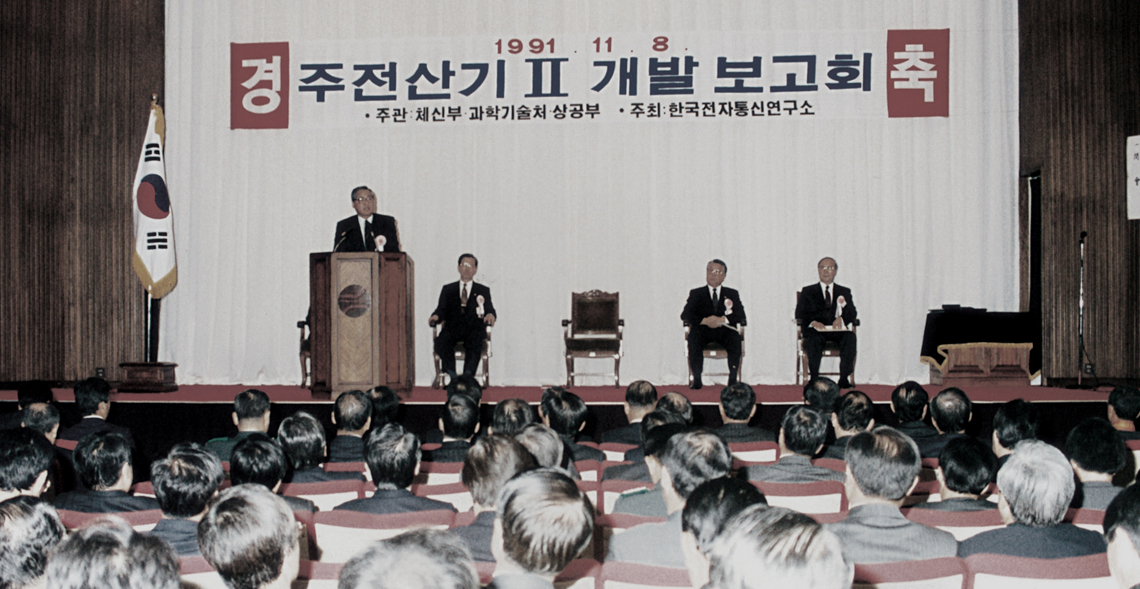
In November 1991, in preparation for the era of knowledge and information in the 21st century, the development and
commercialization of the host II (TiCOM) helped Korea join the rank of large computer manufacturers.
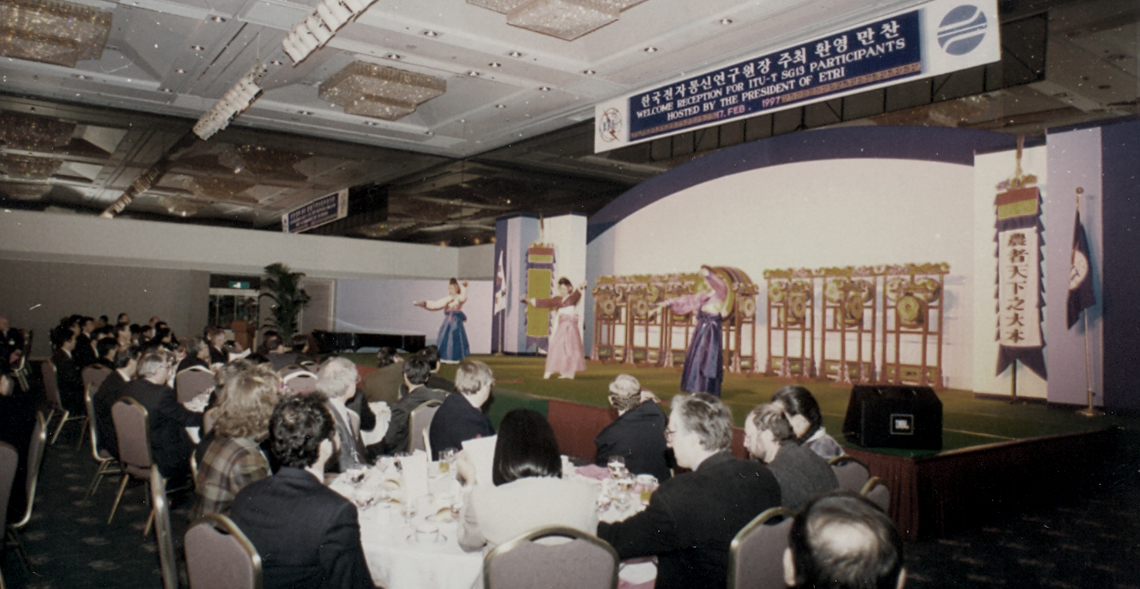
In February 1992, the ETRI President hosted a welcome banquet for the ITU-T SG13 conference in Seoul.

In December 1992, the ETRI-affiliated Information and Telecommunications Research Management Team was founded for efficient management
and support of research and development projects in information and telecommunications.

On May 20, 1993, as part of its 100-day plan for new economy, ETRI held a forum to identify technologies to challenge SMEs.
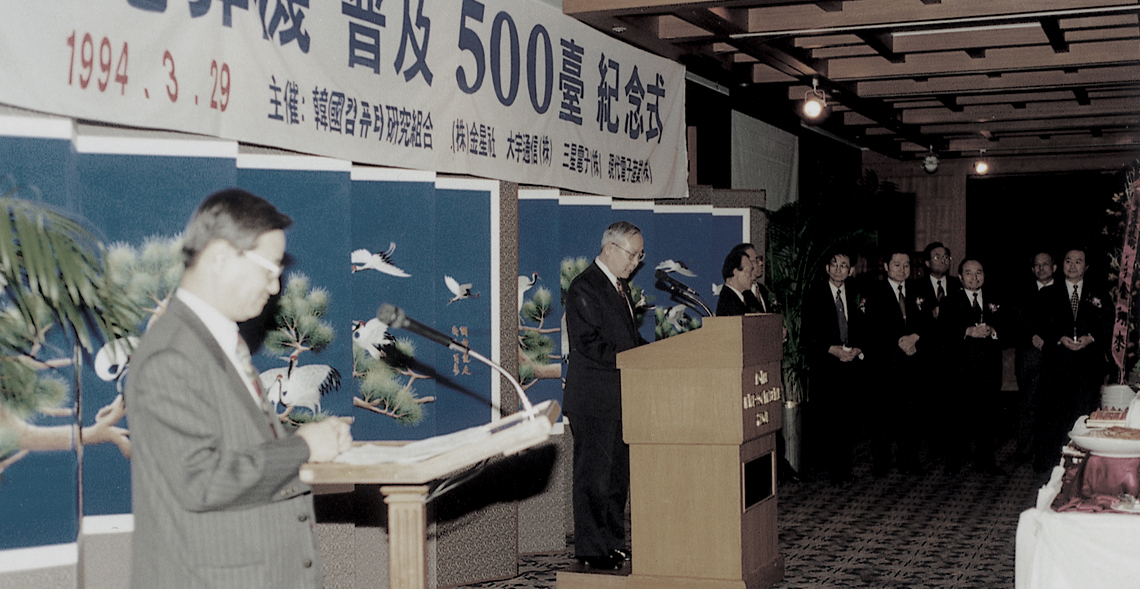
On March 29, 1994, a ceremony was held to celebrate the distribution of 500 hosts developed and commercialized by ETRI.
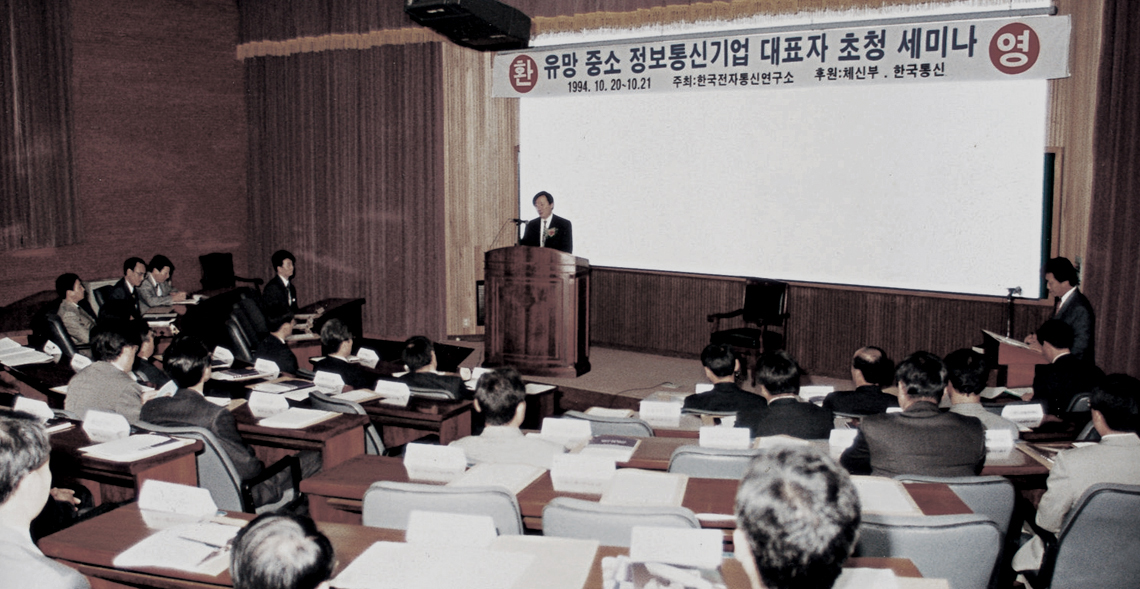
On October 20, 1994, as part of its SME support program, ETRI invited representatives of promising small information and
telecommunications companies to its seminar.

In June 1995, ETRI demonstrated test calls for commercialization, internationally publicizing its development of the world’s first CDMA system.

On September 14, 1995, ETRI displayed a distributed system software and DBMS at the TiCOM SOFTEX 1995, an exhibition for domestic host software.